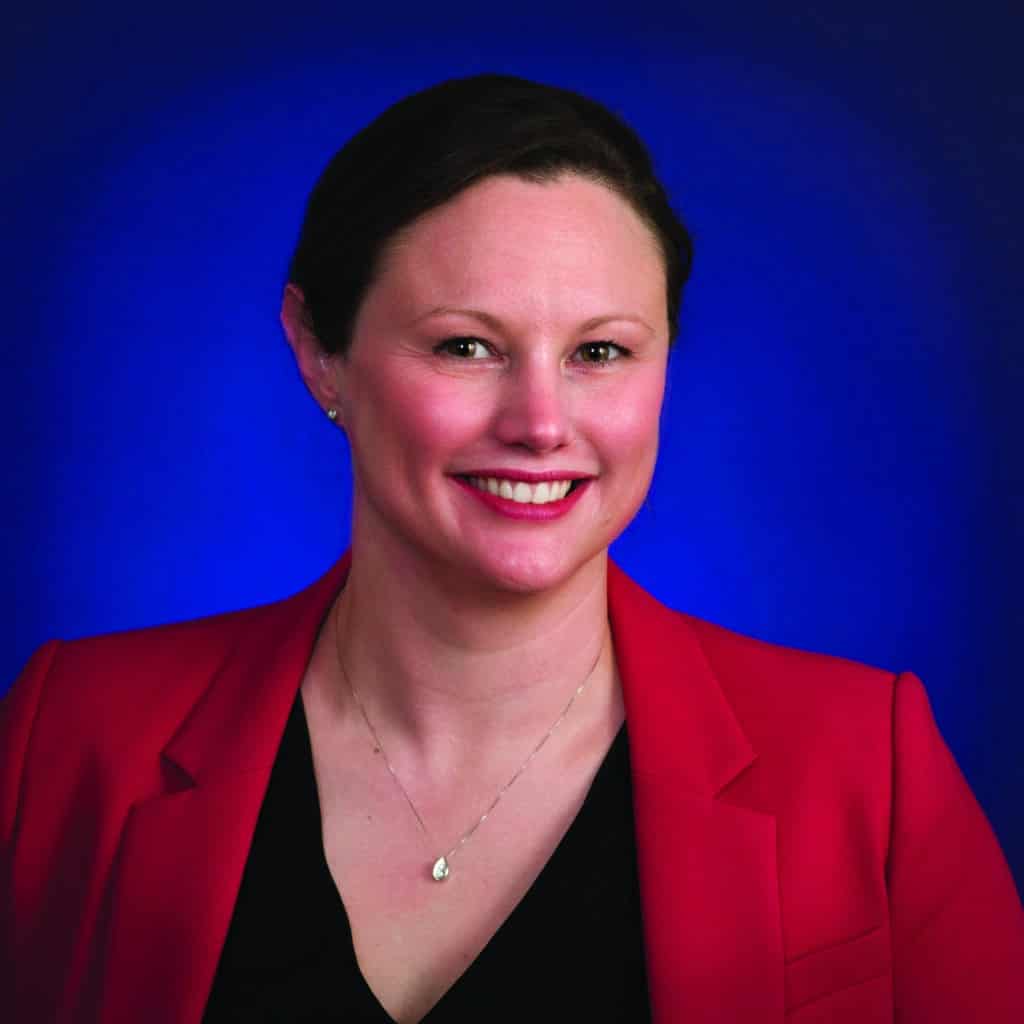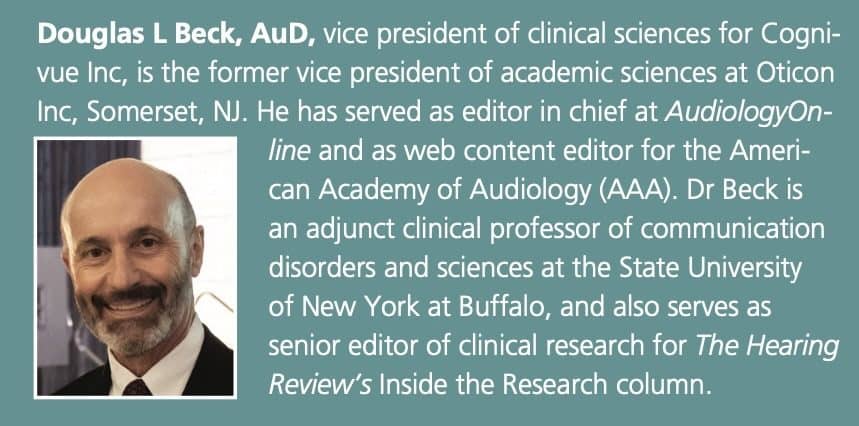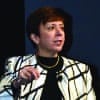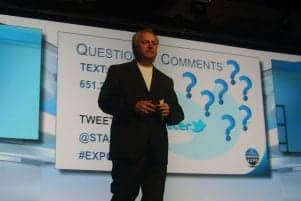She discusses the Academy’s priorities for her term—from advocating for appropriate valuation for payment and services to ensuring members have evidence-based guidance as they work.
Inside the Research | April 2023 Hearing Review
By Douglas L Beck, AuD
Virginia Ramachandran, AuD, PhD, started her career as a social worker, focused on infant mental health. Little did she know, she would one day step into the role of president of the American Academy of Audiology (AAA). But personal experience brought her to the field. Her son developed middle-ear issues, bringing her into contact with a field that captured her interest.

Virginia Ramachandran
Ramachandran, who earned her doctorate in audiology in 2008 and her PhD in 2012 from Wayne State University, has become a noted researcher, clinician, author, and industry leader. In 2016, she joined Oticon as an educational training specialist, after working at Henry Ford Hospital in Detroit as senior staff audiologist and research coordinator for the division of audiology, and clinical educational coordinator for the AuD program at Wayne State. Throughout her career, Ramachandran has been passionate about advancing hearing healthcare and improving the lives of people with hearing loss through innovative technology, clinical care, and patient-centered outcomes.
In an interview with Douglas L Beck, AuD, Ramachandran discusses the ongoing importance of professional training in amplification, given the constantly changing technologies and fitting protocols, the diversity of practice needs and practice patterns, and the goals of the AAA as she steps into her term as president.
Beck: Good Morning, Virginia!
Ramachandran: Hi Doug!
Beck: What an honor it is to interview my dear friend and colleague from our years working together! Additionally, besides our parallel paths at Oticon, you’ve recently ascended to the presidency of the American Academy of Audiology…so we’ve got a lot to talk about. You were hired by Oticon in 2016, which is when you and I met. What are your thoughts regarding amplification and training in 2023?
Ramachandran: It’s as important as ever. The complexity of how to provide well-fit hearing aids and the importance of conveying this information in a way that students or professionals can apply in “messy” clinical situations is a universal, never-ending challenge.
The information I taught 10 years ago was what we knew at that time, but things change. In the 1940s, the professionals “knew” we didn’t need to fit patients with frequency-specific amplification; I’m referring to the Harvard report, of course, but that has not held up. Of course, back then, they were primarily testing people with conductive losses. So, they weren’t actually wrong. It’s just that the population of people we are now fitting with hearing aids is completely different than it was in the 1940s. Now, instead of primarily fitting conductive losses, we are primarily fitting sensorineural hearing loss and in much older patients. Context is everything.
With the advent of OTC and other amplification technologies, we have to constantly learn, evaluate, and re-evaluate. As you often say, there is no finished science. Science is dynamic and it changes all the time, so we have to change, too, just to keep up. And of course, it’s not just a matter of technology; fitting protocols and end-user expectations change, too. So, all in all, professional training in amplification remains ongoing and intense, and I suspect it always will.
Beck: If we were to think about the available technologies in 2023, we have dozens of different hearing aid types and technologies from many dozens of manufacturers: FM systems, t-coils and loops, assistive listening technologies, Bluetooth, Air Pods and the like, OTCs and cochlear implants, as well as auditory brainstem implants, middle-ear and bone-anchored implants, and more. The updates, revisions, modifications, and new product launches one or two times per year from many sources are vast. It takes a dedicated professional to master these technologies and how they may or may not interact.
Ramachandran: Right. The technologies keep improving. The ability to provide an excellent signal-to-noise ratio, helping people to hear well in complex environments, has become very sophisticated. The features that allow patients to better accept and even enjoy their technology has been a boon. It’s no wonder that satisfaction with hearing aids is the highest it’s ever been. The advances of implantable technology have been so great that we keep having to adjust candidacy to keep up with who will benefit. That said, even the best technologies require professional skills to ensure that patients have optimal outcomes. The value the professional brings is often overlooked and undervalued by some, but counseling, aural rehabilitation, diagnostics, and referral all matter.
Beck: I agree. Once the diagnosis is known, and once realistic expectations and goals and objectives can be explored and mutually defined by the patient and the professional, the technology options are reduced and selected. But, back to your story. You started at Oticon in 2016, and then in 2021 you were elected to become president of the American Academy of Audiology and promoted to head of audiology at Oticon.
Ramachandran: Yes, that was a busy year!
Beck: Virginia, your experiences in the profession and in industry, as a participant and a leader, an author, a researcher and as a clinician have been extraordinary. What have you experienced that other audiologists may not be aware of?
Ramachandran: I think a huge issue is the diversity of practice needs and practice patterns. Having spent my clinical time in a major medical center, it was eye-opening to better understand the needs of audiologists and hearing instrument specialists in private practice—trying to provide clinical care and run a business at the same time. How patients are able to access services in different geographic locations differs. And different patient populations have different needs—pediatrics, veterans, and older patients. As audiologists, we have a common education and knowledge base, but how we implement our skills and abilities differs. In fact, I’ve been told by people who come from outside our profession that audiologists specialize to a greater degree and earlier in their careers more than other professionals. I don’t know if that is true or not, but it was an interesting observation.
Beck: That’s an important point. I’ll underscore that each practice is different, and unfortunately, some professionals become judgmental when they learn about practices that are different from their own.
Ramachandran: Yes, and you’ve hit on a point that has been a concern of mine…reading a lot of social media discussions…It is important for us to share differing opinions, but it must be in a respectful and collegial manner.
At any rate, I think that being exposed to many different practice patterns and having the opportunity to talk to so many different hearing care professionals as part of my role at Oticon was very good preparation for me going into the AAA presidency role. The nomination process for the AAA Board is designed to try to have a balance of different practice settings and different geographic regions, but it is necessarily the case that some practice settings provide greater opportunities for audiologists to participate in professional volunteerism. In academic settings and academic medical settings, clinicians are often encouraged to participate and, in some cases, may be granted the time to engage in professional service. If you are running your own practice, you have to make a decision to take time away from your own patients and business to volunteer. It’s a different type of challenge. But it’s important that we have diverse perspectives around the table when it comes to prioritizing our needs and resources.
Beck: I agree entirely. As you are the current president of the AAA, can you tell me which changes might occur in 2023 and which goals, strategies, and action plans are driving the AAA?
Ramachandran: I’m glad you asked! Every year the Board goes through a process of strategic planning. We do our best to identify which goals are most important, both the short- and long-term, for the profession. Then we identify which steps might allow us to accomplish or move toward those goals. We do not have infinite resources of money, time, or volunteers, so we try to prioritize what matters most. There are bound to be differences of opinion on what that is, but we do our best.
From our planning last year, we identified four priorities. The first, and perhaps the most important, is to advocate for appropriate valuation and payment for our services and for the ability to provide services autonomously. Audiologists have the greatest expertise in the field of hearing. Although many of us dislike having to talk about payment because we are here to help people, we must get paid appropriately for our professional services, or we simply won’t be around to provide them. No money, no mission.
The second priority is to ensure that all of our members feel like the Academy provides them with the professional home that they are looking for. The third priority is to ensure that we provide the evidence-based guidance that is needed for professionals who are practicing and to support other efforts, such as demonstrating actual and preferred practice patterns for political, regulatory, and payor needs. Lastly, we would like to find ways for the Academy to develop greater financial resources to do all of this without creating a greater financial burden for members or our already generous sponsors. Easier said than done, but we have an amazing staff and literally hundreds of volunteers supporting these efforts.
Beck: Virginia, it is a joy to know you. Thank you for your time. I congratulate you on your many successes.
Ramachandran: Thanks, Doug. I appreciate your friendship and professionalism, too.
This interview contains responses that have been edited for read- ability and length.







Rama is a government lackey , who has plenty of observations on hearing loss but no real solutions to offer. Such politicians only know big talk and are colluding with hearing aid manufacturers to keep milking the patient base. This industry is full of such corrupt talkers who sing along with the government and have nothing to show in their hard work! What a waste of an interview!